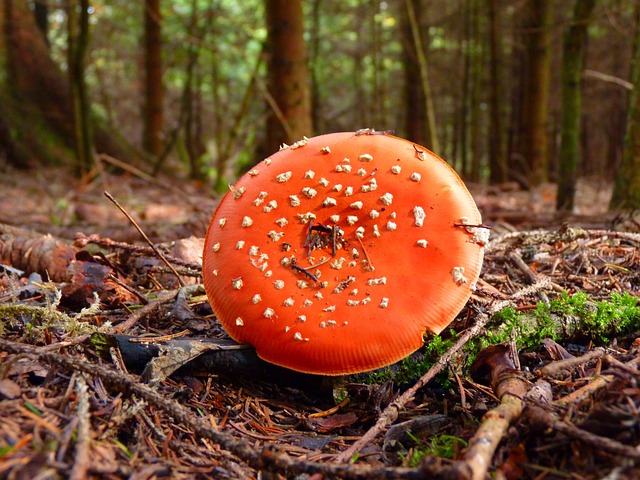The article covers a comprehensive range of topics surrounding the cultivation, legal status, and microdosing of Amanita Muscaria, commonly known as the 'Fly Agaric.' It emphasizes the importance of understanding the mushroom's ecological requirements for successful cultivation, adhering to local laws due to its controlled substance status, and practicing safety protocols during microdosing. The historical significance of Amanita Muscaria across cultures is noted, along with its psychoactive properties that necessitate careful dosage when used in modern-day microdosing practices. Safety measures are highlighted for those considering microdosing, including sourcing from reliable suppliers or expert mycologists, starting with a low dose, and maintaining mindfulness throughout the process. The article concludes by stressing the need for personalized experiences through detailed record-keeping and the importance of consulting healthcare professionals before embarking on a microdosing regimen. It also calls for further scientific research to validate the therapeutic potential of Amanita Muscaria microdosing and provide clear guidelines for its responsible use. The article serves as a guide for those interested in the cultivation and microdosing of this edible mushroom, with a focus on safety, legality, and personal well-being.
Exploring the intersection of traditional practices and modern wellness, the article at hand delves into the transformative potential of Amanita Muscaria in microdosing regimens. This natural wonder, often recognized as a festive icon, holds a rich historical context spanning various cultures and eras. As we navigate through its scientific composition, we uncover the active compounds within this edible fungus and their multifaceted effects. Simultaneously, we address the complex legal landscape surrounding its use, offering clarity on where and how one might legally cultivate Amanita Muscaria for microdosing. From cultivation to consumption, this article provides a comprehensive guide on integrating this unique compound into your daily life safely and responsibly. Personal anecdotes highlight both the purported benefits and the challenges faced by individuals embarking on this journey, offering a balanced perspective on Amanita Muscaria microdosing.
Unveiling the Potential of Amanita Muscaria in Microdosing Regimens

The integration of Amanita Muscaria, commonly known as the fly agaric, into microdosing regimens has sparked significant interest within wellness circles and among researchers alike. This psychedelic substance, with its historical use dating back to various indigenous cultures, is now being reexamined for its potential cognitive-enhancing and mood-regulating benefits when used in microdoses—tiny amounts that are significantly lower than those typically used in psychoactive experiences. The edible form of Amanita Muscaria has been the subject of recent studies, which aim to clarify its effects on mental health and productivity. Preliminary findings suggest that microdosing with this mushroom may offer improvements in creativity, problem-solving abilities, and overall wellbeing. As research continues, it is crucial to approach these findings with caution, emphasizing the importance of scientific validation and responsible use within legal frameworks. The potential therapeutic uses of Amanita Muscaria in microdosing regimens hold promise for those seeking alternative methods to enhance their mental performance and manage certain mental health conditions. However, it is imperative to distinguish between anecdotal reports and empirical evidence as the field progresses, ensuring that any recommendations for microdosing with Amanita Muscaria are grounded in scientific rigor and regulatory compliance.
Historical Context: The Amanita Muscaria's Role Across Cultures and Time
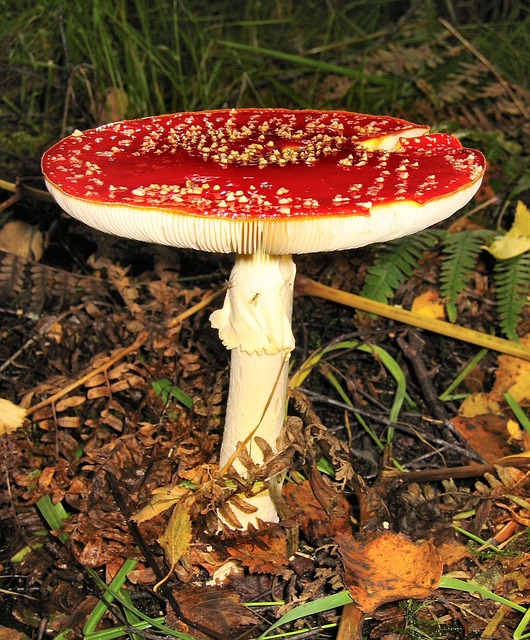
The Amanita Muscaria, commonly known as the fly agaric, has a storied history that spans across various cultures and epochs. This distinctive mushroom, recognized by its vibrant red cap with white spots, has been a subject of fascination and consumption for centuries. In ancient Siberia, shamans reportedly ingested Amanita Muscaria to invoke visions and connect with the spirit world, a practice that reflects a broader pattern of psilocybin use in spiritual rituals among indigenous peoples around the globe. The mushroom’s psychoactive properties have been a focus of ethnobotanical studies, revealing its integration into cultural ceremonies from Scandinavia to Central America. Historically, the Amanita Muscaria has been depicted in rock paintings and ancient texts, indicating its significant role in various societal contexts. The use of this edible mushroom has often been associated with healing practices and spiritual enlightenment, demonstrating its profound impact on human culture over time. Today, the historical context of Amanita Muscaria consumption informs contemporary discussions around microdosing, as individuals explore its potential cognitive benefits in a legal and regulated manner.
Scientific Insights: Active Compounds and Their Effects in Amanita Muscaria
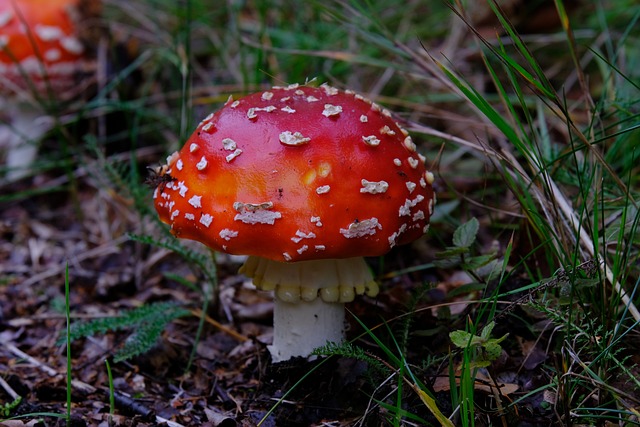
The Amanita Muscaria, commonly known as the fly agaric, is a psychedelic mushroom whose presence in folklore and art spans centuries, yet its potential as an edible with psychoactive properties has garnered recent scientific scrutiny. This iconic toadstool contains several active compounds, most notably psilocybin and psilocin, which are the primary substances responsible for the psychedelic effects when ingested in larger doses. In microdose regimens, however, these compounds are consumed in much smaller quantities. Microdosing Amanita Muscaria edible forms offers a unique experience that can range from mild mood elevation to enhanced creativity and problem-solving abilities. Researchers are exploring the therapeutic potential of these microdoses, with preliminary studies suggesting benefits for mental health conditions such as depression and anxiety. The effects of these compounds on cognitive function and mood are believed to stem from their interaction with serotonin receptors in the brain, potentially leading to improved mental clarity and focus. As scientific research progresses, the understanding of the therapeutic applications and the mechanisms behind the effects of Amanita Muscaria microdosing continues to evolve, offering promising avenues for exploration in the field of mental health treatment.
Legal Landscape: Navigating the Legality of Amanita Muscaria Microdosing
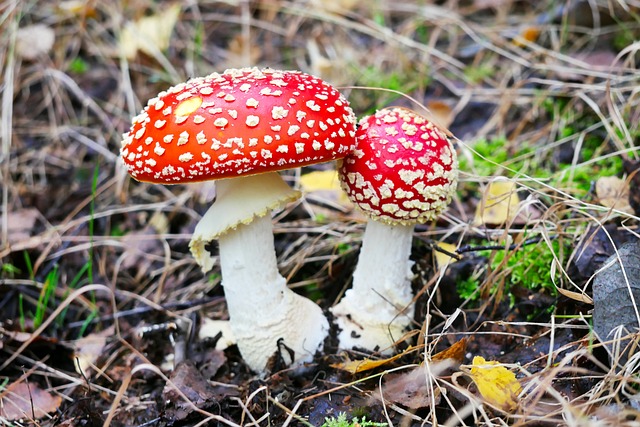
As the interest in microdosing with psychedelics grows, the legal landscape surrounding the practice remains complex and varies significantly by jurisdiction. Amanita Muscaria, often referred to as the ‘Fly Agaric,’ is a psilocybin-containing mushroom that has been used for centuries in various cultural contexts. In recent years, its potential therapeutic benefits have sparked curiosity among individuals seeking enhanced cognitive function and improved mental health outcomes through microdosing. However, the legal status of Amanita Muscaria is not uniform across countries or even within different states or provinces in a single country. For instance, while some regions may classify Amanita Muscaria as an edible fungi permissible for consumption and cultivation, others categorize it as a controlled substance due to its psychoactive properties. It is crucial for potential microdosers to consult local legislation and regulations before considering the use of Amanita Muscaria. Legal frameworks are evolving rapidly, with some regions conducting clinical trials to explore its therapeutic benefits, while others maintain strict prohibitions. This dynamism underscores the importance of staying informed about the most current legal standards to avoid unintended legal consequences. Navigating the legality of Amanita Muscaria microdosing requires careful attention to detail and up-to-date knowledge of local laws and regulations. Prospective microdosers should prioritize their safety and adherence to the law when exploring this alternative wellness practice.
Cultivation Considerations: How to Grow Your Own Amanita Muscaria Safely and Legally
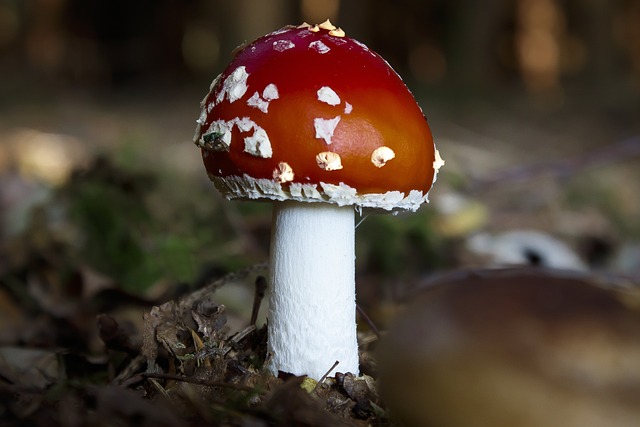
Cultivating Amanita Muscaria, commonly known as the Fly Agaric, can be an intriguing endeavor for those interested in mycology or the therapeutic potential of microdosing. It is crucial to approach this task with both scientific precision and legal awareness, as the cultivation and use of Amanita Muscaria are subject to stringent regulations in many jurisdictions. To ensure a successful and compliant growth process, one must first understand the specific ecological needs of Amanita Muscaria. These mushrooms prefer a symbiotic relationship with certain tree species, such as beech or pine, and thrive in well-drained soils rich in organic matter. Prospective growers should source their spores responsibly, often from spore vendors who provide legally harvested spores.
Once the substrate is prepared and the spores are introduced, maintaining optimal conditions becomes paramount. Temperature and humidity levels must be closely monitored to replicate the mushroom’s natural environment. A consistent temperature range of 60 to 75 degrees Fahrenheit and moderate humidity are ideal for Amanita Muscaria cultivation. Regular upkeep, including checking for signs of contamination and adjusting moisture levels, is essential to prevent the growth of harmful microorganisms that could compromise the crop. Additionally, it’s important to understand local laws regarding the possession and cultivation of psilocybin-containing mushrooms, as Amanita Muscaria contains this psychoactive compound. Cultivators must comply with these regulations to avoid legal complications. Safety measures should also be in place to handle the mushrooms safely, as ingestion can have potent effects when consumed in larger quantities. With careful attention to detail and adherence to legal guidelines, cultivating Amanita Muscaria for microdosing can be a rewarding and responsible practice.
Dosage and Protocols: Safe Microdosing Practices with Amanita Muscaria

When exploring the realm of microdosing with Amanita Muscaria, adherence to precise dosage and protocols is paramount for safety and efficacy. Amanita Muscaria, commonly known as the Fly Agaric, has a long history of use in various cultural traditions, yet its inclusion in modern microdosing regimens requires careful consideration due to its potent psychoactive properties. Prospective microdosers should begin by sourcing edible Amanita Muscaria from reputable suppliers or, ideally, forage responsibly under the guidance of an experienced mycologist. The dosage for microdosing with Amanita Muscaria is typically much lower than that for a psychoactive experience; a common microdosing protocol involves consuming a quarter to a half of a dried cap, split into smaller doses over the course of a day. This approach allows for a controlled and measured intake, which is crucial for managing the substance’s effects and minimizing potential risks.
Safety protocols are equally as important as dosage when it comes to microdosing with Amanita Muscaria. It is recommended that individuals new to this practice start with an extremely low dose to gauge their sensitivity and reactivity. Safety protocols also include setting a clear intention for the microdosing experience, ensuring a supportive environment, and maintaining a mindful state throughout the process. Regular monitoring of one’s physical and mental responses is essential, as is keeping detailed notes of dosage amounts, timing, and effects experienced. This data can be invaluable for adjusting future doses and understanding personal thresholds. Additionally, consulting with healthcare professionals before embarking on a microdosing regimen with Amanita Muscaria is highly advised to ensure that this practice aligns with one’s health status and individual circumstances.
Integrating Amanita Muscaria Microdosing into Daily Life
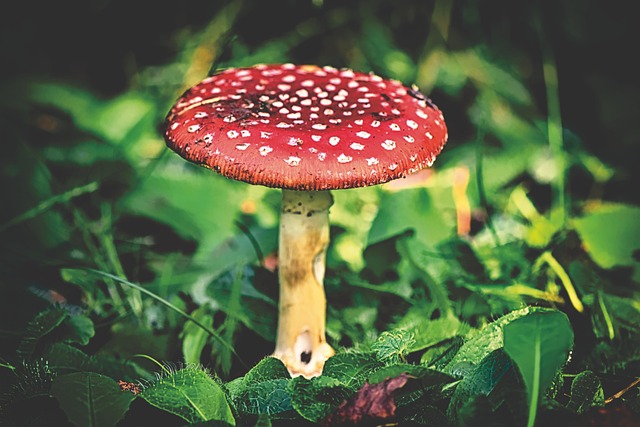
Incorporating Amanita Muscaria microdosing into daily life can be a transformative experience for those who approach it with intention and discernment. The Amanita Muscaria, commonly known as the ‘Fly Agaric’, is an iconic psychedelic mushroom with a rich history of use in various cultural contexts. As an edible substance, it has been traditionally consumed in small, deliberate doses for its potential cognitive and mood-enhancing effects. Modern explorers into this practice often report benefits such as heightened creativity, improved focus, and a reinvigoration of their daily tasks. To integrate Amanita Muscaria microdosing effectively, it is crucial to maintain a consistent routine—one that aligns with individual wellness goals and respects the natural rhythm of the body and mind. This may involve careful planning of dosing schedules, ensuring that microdosing complements rather than disrupts daily responsibilities and personal activities.
Safety and legality are paramount considerations when embarking on a microdosing journey with Amanita Muscaria. It is essential to source the mushroom from reliable and reputable suppliers to avoid potential contaminants or adulterants that could compromise health. Additionally, one must be well-versed in the legal status of these mushrooms in their jurisdiction, as laws governing psychedelics vary widely across regions. For those who navigate these waters with care and knowledge, Amanita Muscaria microdosing can be a harmonious addition to a healthy lifestyle, offering profound insights and a deeper sense of connection to the world around them. It is a personal journey that requires dedication to both the practice and self-reflection, often leading to a more enlightened perspective on life’s challenges and opportunities.
Personal Experiences: Accounts of Amanita Muscaria Microdosing Benefits and Challenges

Individuals experimenting with microdosing, particularly using Amanita Muscaria, often report a range of subjective experiences and purported benefits. The Amanita Muscaria edible, known colloquially as the ‘fly agaric’, has been a subject of interest in various cultures for its psychoactive properties. Proponents claim that microdosing with this substance can lead to heightened creativity, improved focus, and a sense of well-being. Users describe a fine line between the therapeutic effects and the challenges they face, such as experiencing mild anxiety or difficulty concentrating at higher doses. The balance between these benefits and potential drawbacks is crucial for anyone considering this practice. It’s through careful personal exploration that individuals can navigate the nuances of Amanita Muscaria microdosing, often leading to a more profound understanding of its effects on their mental state and productivity. However, it’s important for individuals to approach microdosing with caution, as the legal status and potency of Amanita Muscaria can vary widely, requiring a responsible and informed approach to ensure safety and legality. Personal anecdotes suggest that when used judiciously, and within a supportive framework, Amanita Muscaria edible microdosing can offer transformative insights and enhance cognitive functions for some individuals. Nonetheless, these experiences underscore the necessity of further scientific research to validate the claims and provide clear guidelines for safe usage.
